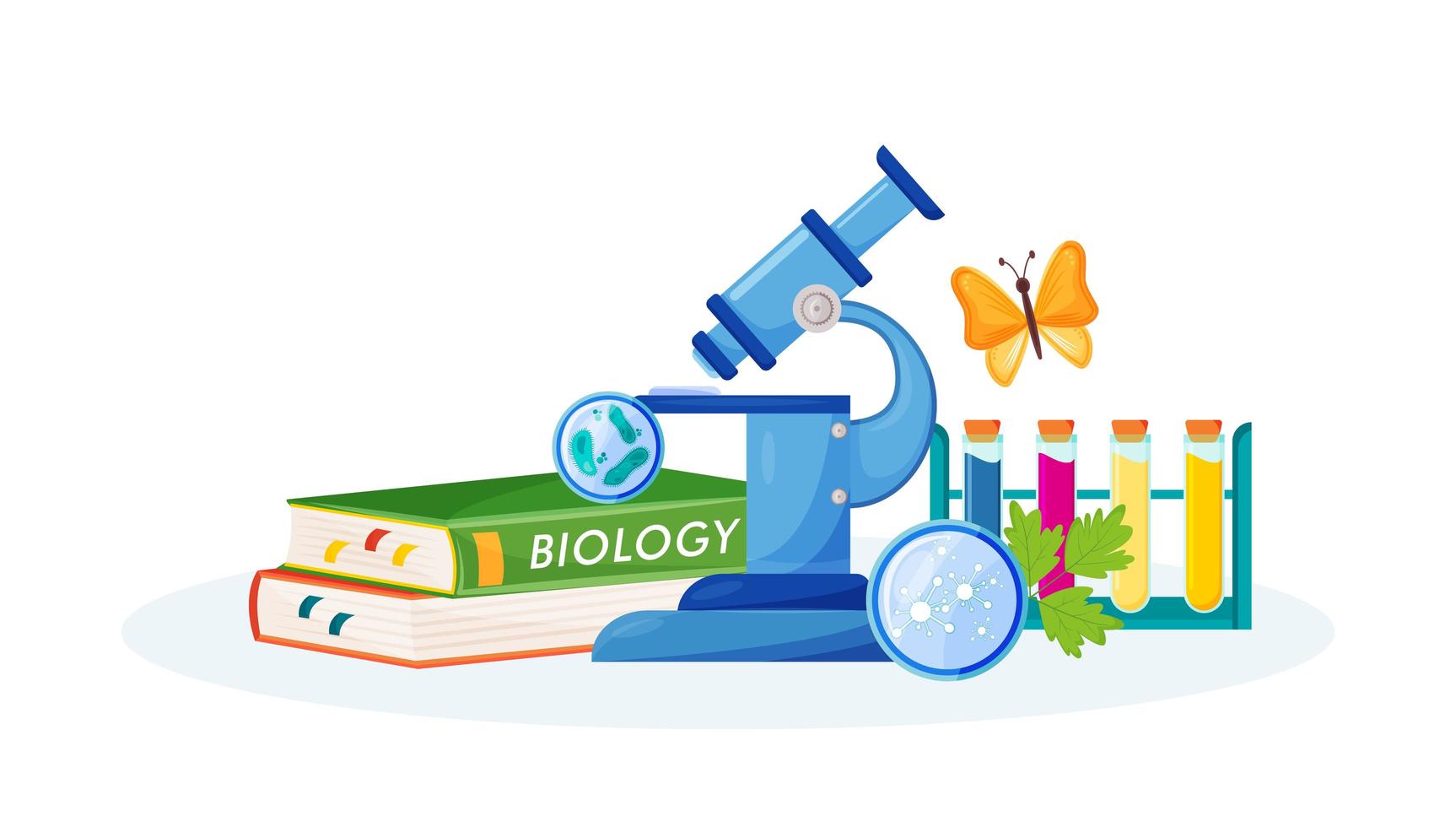4.7.2 Organisation of an ecosystem
4.7.2.1 Levels of organisation
Biomass Creation
- Biomass is a term used to describe getting energy from biological matter.
- Producers photosynthesise in order to produce biomass.
- They are fed upon by primary consumers.
- Producers are usually a green plant or an alga.
- They make glucose from photosynthesis to provide energy.

Food Webs
- Common example of a food web
- Lastly, we must label the Tertiary Consumers in the food web
- And here is the final product: a fully constructed food web.

Sampling
- Sampling is a technique used to find a small proportion of a population and use it to draw conclusions regarding the whole population.
- Transects and quadrats are measurement tools that can be used for sampling.

Quadrats
- Quadrats are wooden, or wire tools that form a 0.25 metres squared area.
- You can place a quadrat over an area and use it to sample.
- This can be done by:
- Counting the number of a certain organism,
- Finding the percentage cover of an organism or the area within the quadrat covered by the organism
- Observing the diversity of species in the area.


Random Sampling
- In order to produce valid results, care must be taken to make sure sampling is random.
- This can be done by throwing the quadrat over an area with eyes closed to avoid bias, or a better method involves two measure tapes.
- Place two measuring tapes across an area like two axes of a graph.
- Then use a telephone number or a random number generator to make random coordinates.
- Place the quadrats in the random area.
- Repeat this at least three times for reliability.

Belt Transects
- Belt transects can be used to sample changes in diversity across a range of areas.
- For example, you can use them to monitor species diversity along a rocky shore line.
- You place the quadrat at different distances along this line, which can be built using measuring tape.

Systematic Sampling
- You can use a transect to see the effect of different abiotic and biotic factors on species diversity along a habitat.
- You can then use this information to draw a kite diagram.

Systematic Sampling
- If we look at this data, we can analyse the species diversity across the transect.
- This data was taken from along a habitat.
- We use the width of the bar from the midline to see how many individuals are present.

Systematic Sampling
- Therefore, we can see here that at the first site, Lithics were the most abundant organism.
- However, as we went further along the transect, other organisms, such as trees and shrubs become more and more common, whilst the lithics reduced in number.
- At the final site, we see that reeds and rushes were the most abundant.



Arithmetic Mean
- If we have many sets of data, we can attain one average value by calculation of a mean.
- For example, if you have taken data from 3 randomly placed quadrats, regarding the number of lichens, you can work out the average number of lichens.

Median
- In order to calculate the median, you place all of the numbers in ascending order.
- The number in the middle is the median.
- For example, if you have 9 quadrats and have counted the number of lichens, and get the following data: 1,1,3,4,5,6,7,7,7.
- The median would be 5.

Mode
- The mode is the most common number.
- If we use the same data as before (1,1,3,4,5,6,7,7,7), the mode would be 7, as it is the value that we see the most.
- You can draw bar charts in order to plot such data.

Types of Organism
- In previous tutorials, we saw that producers are eaten by primary consumers, which are in turn eaten by secondary consumers and then tertiary consumers.
- Predators kill and eat other organisms, so the predator of the producer is the primary
consumer and the predator of primary consumer is the secondary consumer.
- Prey are killed and eater by predators.
- Therefore, producers are the prey of primary consumers and primary consumers are the prey of secondary consumers.

Predator-Prey Cycle
- Predators and prey fluctuate with one another.
- As the predators go up, the prey will reduce, leading to a reduction in the predators as there will be less food.




4.7.2.2 How materials are cycled
Resource Cycling
- Elements and compounds are not created, they are merely cycled into different forms.
- We see this in our own bodies, as we take in proteins, convert them to amino acids, then use these amino acids to build proteins in the body.
- We will study the important carbon and water cycles.

Water Cycle
- The water cycle is used to move water through the ecosystem.
- The water we drink is the same water that existed even in Jurassic times.
- It is cycled through the environment.
- As it is a cycle, we can begin at any point.
- Therefore, we shall begin in the lakes, oceans and trees.


- Transpiration

- Evaporation.

- Condensation.

- Transport.

- Precipitation

- Surface runoff

- Infiltration


Carbon Cycle
- Do not get too worried by the diagram.
- Just follow the paths that are shown by the arrows.
- Carbon must be cycled through the environment.
- There are only four processes in this cycle that you need to know for this process.
- We will begin with how carbon enters the atmosphere.

Combustion
- Combustion is burning.
- Humans have harnessed combustion to transfer energy.
- We burn fossil fuels in order to provide energy.
- Burning any carbon containing compounds releases carbon dioxide into the atmosphere.

Photosynthesis
- Once the carbon dioxide is in the atmosphere, it must return into organisms.
- This occurs during photosynthesis.
- Plants take in Carbon dioxide and convert the carbon into glucose.

Respiration
- Animals consume plants, transferring carbon along.
- The glucose is then used in respiration and converted to carbon dioxide to return to the atmosphere.

Decomposition
- When plants and animals die, micro-organisms known as decomposers break down their bodies, causing a release of carbon dioxide back into the atmosphere.
- They also break down organisms into their mineral ions and return these to the soil.
- From here they can be taken up by plants.
- These decomposers are also known as detritivores.



4.7.2.3 Decomposition (biology only)
Decomposition
- Decomposition is measured by the rate of decay.
- The rate of decay is a measurement of the speed at which decomposers break down dead organisms.

- There are several factors affecting the rate of decay:
- Temperature
- Water
- Availability of oxygen
Temperature
- Decomposers have an optimum temperature.

Water
- Decomposers require water to survive.

Oxygen Availability
- In general, Oxygen is required to allow decomposers to respire.
- Some decomposers do work in anaerobic conditions.

Rate of Decay
- We must remember that rate of change is measured as, the change in a value divided by the time period.
- Therefore, if we get values of decomposition, we can calculate the rate of decay.

Rate of Decay

- We must remember that rate of change is measured as, the change in a value divided by the time period.
- Therefore, if we get values of decomposition, we can calculate the rate of decay.

Decomposition and Farming
- Farmers can use decomposition to provide conditions for the best possible crop yield.
- Compost is the product of dead plants.
- Adding worms to the compost increases the rate of decomposition.

Decomposition and Farming
- This compost therefore acts as a natural fertiliser with the most important element recycled is nitrogen.
- This is conversed into nitrate ions, which are required for protein building in plants.

Decomposition and Fuel
- Anaerobic decay can be used to produce methane, a fuel.
- This is because when decomposers act in the absence of oxygen, they produce carbon dioxide and methane.

Decomposition and Biogas
- Manure is placed in a biogas generator.
- Specific crops have been developed to form the organic material for this process.
- The anaerobic decomposition then is used to form methane, which can be combusted as an energy source.



4.7.2.4 Impact of environmental change (biology only) (HT only)
Temperature
- Temperature shifts can change how organisms distribute themselves.
- For example, many species of bird fly south for the winter, in search of warmer climates.

Water
- The distribution of many plants and animals change dependent on rainfall.

- Humans have cleared many areas of forest and burnt lots of fuel.
- This has lead to a huge amount of air pollution.
- Many species are unable to survive in areas that are very polluted and so have migrated to get away from these areas with high levels of toxic atmospheric gases, such as sulphur.








Still got a question? Leave a comment
Leave a comment